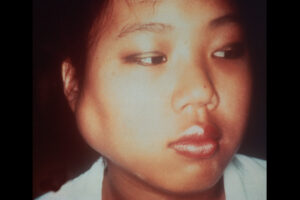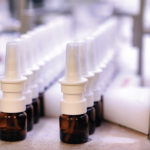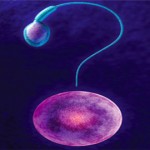
Marked parotid enlargement is seen in this 15-year-old girl with Sjögren’s disease of three-year duration.
BARCELONA, SPAIN—In recent years, such organizations as the Sjögren’s Foundation, EULAR and ACR have switched from using the term Sjögren’s syndrome to Sjögren’s disease. The reason for this change is to recognize that Sjögren’s is not just a constellation of symptoms but, rather, represents a distinct disease entity that should be recognized as such. At EULAR 2025, Gaetane Nocturne, MD, PhD, professor in the rheumatology department of Paris-Saclay University, Paris, France, followed this trend in her talk titled, Sjögren’s Disease: What Is New.
Dr. Nocturne began the lecture discussing how epithelial dysfunction is a hallmark feature of Sjögren’s disease and how findings related to a premature aging phenotype in resident salivary gland stem cells (SGSC) have shed light on the disease’s pathogenesis.
In a paper by Pringle and colleagues, the authors found that SGSC in primary Sjögren’s disease exhibits features of premature aging, including reduced numbers of cells, impaired ability for self-renewal, diminished capacity for differentiation and evidence of cellular senescence. Based on these findings, the authors speculated that current disease-modifying antirheumatic drugs (DMARDs) are unlikely to restore glandular function and that regenerative approaches, such as supplementation with healthy SGSCs, may be necessary to recover saliva production in patients with the disease.1
Dr. Nocturne also discussed a paper by Meudec and colleagues that demonstrated a link between interferon and epithelial dysfunction in patients with Sjögren’s disease by showing that salivary gland organoids maintain a persistent interferon signature and exhibit impaired epithelial function compared to controls. In this same study, the authors found that treatment with tofacitinib, a Janus kinase (JAK) inhibitor that blocks interferon signaling, improved the swelling response in differentiated salivary gland organoids from patients with Sjögren’s disease (for context, swelling capacity in response to cholinergic stimulation is a functional marker of epithelial secretory activity).2 These findings suggest that interferon may play a larger role in the pathogenesis of Sjögren’s disease than was previously appreciated, and this may have implications for selecting the best therapeutic targets.
According to Dr. Nocturne, several early steps explain the pathogenesis of Sjögren’s disease. First, there are triggers like interferon stimulation via mitochondrial RNA that target the epithelium. Next, activation of tissue-resident memory T cells leads to the specific targeting of acinar cells because of cytotoxicity. Following this, there is activation of pericytes, which are perivascular stromal cells that play a critical role in maintaining microvascular stability, regulating endothelial function, and modulating tissue fibrosis. There is then immune cell recruitment in the form of B cells and T cells and, finally, there is the formation of organized, ectopic lymphoid aggregates within the salivary glands (termed tertiary lymphoid structures) as a result of the chronic inflammation that has occurred.



